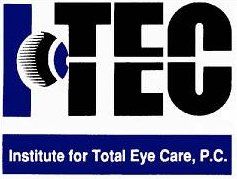Cataract Surgery
Cataract Surgery
Cataract Surgery
Cataract Surgery
Cataract is a clouding of the natural lens, the part of the eye responsible for focusing light and producing clear, sharp images. The lens is contained in a sealed bag or capsule. As old cells die they become trapped within the capsule. Over time, the cells accumulate causing the lens to cloud, making images look blurred or fuzzy. For most people, cataracts are a natural result of aging.
Because of the "clouding" of the lens of the eye, cataracts often affect common activities such as reading and driving at night. We want to help you return to your normal lifestyle as quickly as possible. We also have presbyopia – correcting (reading) and astigmatism correcting intraocular lens implants available for cataract patients who desire them.
After you and your eye doctor have decided that you will have cataract surgery, your eye will be measured to determine the proper power of the lens that will be placed in your eye during surgery.
Your doctor will then work with you to decide which lens is best for your visual needs. There are two basic types of lens (monofocal and presbyopia-correcting), each designed for a specific corrective function. Monofocal lens are intraocular lens that provides patients with only one focal point. Most commonly, these lenses correct only for distance vision. Those patients who opt for this type of lens use reading glasses after surgery to read and see things up close. Presbyopia-correcting lenses on the other hand are designed to correct a range of vision, both near and distance. Unlike the monofocal lens, these intraocular lenses are designed to give patients good distance vision as well as intermediate and near vision after surgery.
During cataract surgery an artificial lens is placed in the eye. Many people can benefit from new Premium lenses that can help eliminate the need for glasses. Ask your doctor if you are a good candidate.
Premium IOL
- Presbyopia-correcting Intraocular Lens
- There are multiple presbyopia-correction intraocular lenses (PC-IOLs) available in the U.S. currently. Each lens has its own advantages and disadvantages. These lenses were approved by the FDA in 2003 and many different types have been implanted by ITEC physicians. Presbyopia-correcting lenses work in different ways and are used for different patients depending upon their visual needs. They work the best when implanted in both eyes within a short period of time. The ultimate goal is reduced dependence upon glasses across the full range of vision.
- Implantation of a PC-IOL is a similar procedure to implantation of a monocular IOL. Patients with other ocular problems (e.g. diabetes, macular degeneration, severe glaucoma) may not be good candidates. If you are interested in reducing your dependence on glasses after cataract surgery, your ITEC physician will gladly go over your options and determine if PC-IOLs are right for you.
- Toric Intraocular Lens
- There are also lenses available to decrease astigmatism after cataract surgery. Toric IOLs are implanted in the eye the same way as a conventional IOL. However, they are made with an additional power to correct for the unequal curvature of the front of the eye caused by astigmatism. Although a patient will still require reading glasses after implantation of a Toric IOL, the need for glasses at a distance will be significantly reduced or eliminated. Unlike PC-IOLs, Toric IOLs may be implanted in only one eye. Again, your ITEC physician will gladly review your options prior to cataract surgery.
Cataract surgery is an outpatient procedure that is performed on one eye at a time. When you arrive, your eyes may be treated with eye drops and anesthetic to minimize any discomfort during the operation.
During this routine operation, a small incision is made in the eye. Your surgeon will use a tiny instrument (about the size of a pen tip) to remove your clouded lens. Once this is accomplished, your surgeon will insert the artificial intraocular lens (IOL) that has been determined to be the best for you into your eye. Typically, no stitch is involved and discomfort is minimal.
After the cataract surgery, you'll be given a short time to rest. Then, the very same day, you can go home. Within the next 24 hours, your doctor will want to see you for an evaluation. Drops will be prescribed to guard against infection and to help your eyes heal. For a few days, you will need to wear a clear shield at night to prevent you from rubbing your eye. Most patients can resume their normal activities in a short period of time.
Additional testing is performed in the office on patients requesting PC-IOLs or Toric IOLs to ensure the best result possible. Some patients may require additional procedures after cataract surgery to achieve the best vision possible, but this is uncommon.

